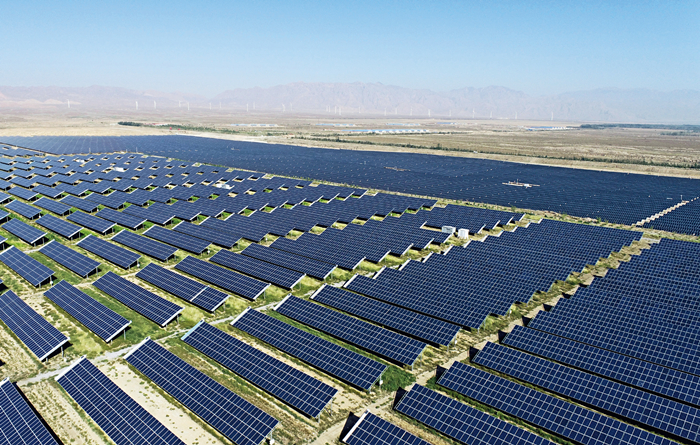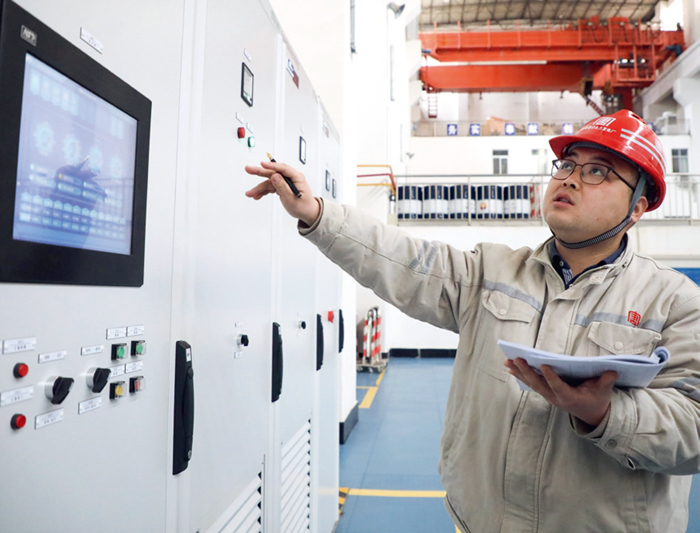|
||||||||||
| Home Nation World Business Opinion Lifestyle ChinAfrica Multimedia Columnists Documents Special Reports |
|
||||||||||
| Home Nation World Business Opinion Lifestyle ChinAfrica Multimedia Columnists Documents Special Reports |
| ChinAfrica |
| Big Data Connects Regions |
| China speeds up implementation of integrated national big data system |
| By GE LIJUN 丨VOL. 14 APRIL 2022 ·2022-03-25 |

Guizhou has bright growth prospects. China approved a project in February to build eight national computing hubs and 10 national data center clusters, with the goal of channeling more computing power from the country’s established eastern areas to its resource-rich western regions, including Guizhou. The National Development and Reform Commission (NDRC) and three other central departments have given their approval to the project, which completes the general arrangement for a national integrated system of big data centers that would help the country’s digital development.
This is another interregional project in China’s quest of high-quality, sustainable development through resource optimization, following the South-North Water Diversion Project, the West-East Gas Pipeline, and the West-East Power Transmission Program.
More balanced
This decision was made against a backdrop of high demand for computing power, a key productivity driver for the digital economy. According to the NDRC, demand will grow at a rate of over 20 percent per year. The wave of digitization has seen shortages of energy and land resources as well as the rising cost of electricity in the eastern regions.
Statistics from the National Energy Administration show that in 2020, the electricity consumption of China’s data centers reached 200 billion kwh, accounting for more than 2 percent of the total consumption of society. The sector’s electricity consumption in China is growing at an annual rate of more than 10 percent, with the share expected to double to 4.05 percent in 2025.
China’s western regions, on the other hand, are rich in resources, particularly renewable energy. Guizhou has enough of electricity; Inner Mongolia Autonomous Region is working on wind power; Ningxia Hui Autonomous Region has a thriving photovoltaic industry; and Gansu Province is developing clean energy. As a result, they have the ability to accelerate the development of data centers and meet the eastern regions’ data computing needs.
“There are two types of data: hot data and cold data. Cold data can be used in the west while hot data can stay in the east,” President of the Beijing National Accounting Institute Qin Rongsheng told ChinAfrica. Cold data processing, such as background processing, offline analysis, and data storage and backup, is handled by the four hubs in the northern and western areas. The other four hubs located in more developed regions will provide services that require greater network capacity, such as industrial Internet and telemedicine.

A staff member of the Qilinsi Hydropower Station inspects equipment in Wenxian County, Longnan City, Gansu Province, on February (XINHUA)
More advantageous
“In reality, the mega project is part of a nationwide integrated big data center innovation system,” Yang Fan, Deputy Head of Chongqing’s Yubei District, told ChinAfrica. According to her, the east-west project helps create a new growth pole of digital economy in the central and western regions.
In the city of Zhongwei, Ningxia Hui Autonomous Region in northwest China, the hinterland, arid mountains and the Gobi desert, as well as the cold, biting wind, were once its economic limitations. These flaws have become unique advantages for the growth of the cloud computing and big data industries, with six mega data centers already constructed there.
“In comparison to the eastern provinces, our data center can save roughly 3 million yuan ($473,400) per year by using natural air conditioning technology and paying lower electricity prices. Furthermore, rent is about a third of what it is in the eastern provinces,” added Zhuang Ning, general manager of a data center in Zhongwei.
A mega data center is a major energy consumer, consuming nearly 100 million kwh of electricity per year, according to the 2020 Data Center White Paper published by China Academy of Information and Communications Technology and Open Data Center Committee. Locating them in regions rich in renewable resources is thus conducive to carbon neutrality. China’s economy has entered the era of the digital economy. The most energy-intensive part of it is the data center. Currently, green electricity accounts for about 20 percent of its energy use. With the project, a large number of data centers will be established in the west, increasing the use of green energy such as photovoltaic and wind power. “If the ratio increases from 20 to 80 percent, it will be possible to reduce Beijing’s total carbon emissions by 1.6 times by 2025,” said Xu Bin from the NDRC.
Furthermore, the project will significantly boost data center investment. Infrastructure, IT equipment manufacturing, telecommunications, software, and renewable energy supply are all part of the industrial chain. The NDRC estimates that during China’s 14th Five-Year Plan period, more than 400 billion yuan ($63 billion) in related investment will be made each year.
China’s big data industry is booming. In late 2021, the Ministry of Industry and Information Technology published a plan to develop the sector. It estimates that the big data business would be worth more than 3 trillion yuan ($474 billion) by the end of 2025, with a 25 percent annual growth rate.
|
||||||||||||
| About Us | Contact Us | Advertise with Us | Subscribe |
| Copyright Beijing Review All rights reserved 京ICP备08005356号-5 京公网安备110102005860号 |